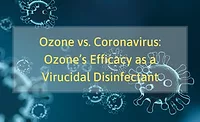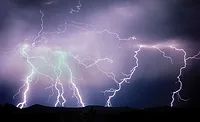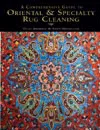Dead Bodies Can Breathe New Life Into Duct Cleaning: A Case Study
Routine duct cleaning job transforms into bio-hazard scene after corpse is found on site.
We constantly get calls from the disaster restoration companies in our area about cleaning and sanitizing the duct systems in homes and businesses following a fire, flood or other catastrophe.
So when our phone rang on the morning of August 28th, 2014 and we were asked to perform a duct cleaning and sanitizing in a home, it was pretty routine. After the address of the residence was given and a cleaning date selected, our receptionist asked for the nature of the disaster. The restoration representative paused, her voice lowered and she replied: “A human corpse was discovered in the home two weeks after expiring.”
Now we’ve handled duct cleaning in homes where people had died before, but this was a little different. Usually when a person expires in their home, the body is quickly removed and it’s not a big deal from a cleanup perspective.
In this case, however, not only had two weeks passed before the body was removed, but the weather had been in the mid-90s, and there was no air-conditioning in the home.
Fortunately for us duct cleaners, we’re usually one of the last ones to perform our services in disaster cleanup situations, so the rest of the home had already been cleaned and was really in pretty good shape when we got there. But there still was an unmistakable odor present - an odor which is difficult to describe. If you’ve experienced this odor before, you know what I mean, and you’ll never forget it.
Just to be on the safe side, wanting to be sure everything was done to code, I called and spoke to a representative with the Environmental Protection Agency. Additionally, being a member of the National Air Duct Cleaner’s Association (NADCA), I called and spoke with one of their experts.
In a nutshell, it was basically a matter of making sure every bit of the ductwork was cleaned and sanitized using equipment and antimicrobials that met the standards for such a level of restoration.
The first step was to take a look at the duct system and see with what we were dealing. For instance,
- What type of ducting was it, and how porous was it?
- What was the inside of the furnace like? Did it have fiberglass lining?
Cleaning the Ducts
By removing the register covers and looking/feeling down the ducts, we could tell that they were made of the typical plastic flex, so the porosity was not a factor. However, they still needed to be deep-cleaned and sanitized. We performed a thorough cleaning with an air whip and skipper ball, removing all the dust and debris adhering to the sides of the ducts.
As with nearly all homes that have not had their ducts cleaned recently, copious amounts of sheetrock dust, sawdust and household dust came pouring out into our vacuum box and into our HEPA vacuum unit. We cleaned the ducts one at a time, first agitating the duct walls with the air whip, then blasting them with the compressed air-powered skipper ball, scouring the sides with 100+ PSI of targeted air.
Construction debris in the form of chunks of wood/sheetrock, nails and discarded sandpaper were then vacuumed out by running the hose through each duct. There’s almost always some interesting items removed during this part of the process. In this case, an empty yogurt container (probably discarded by a construction worker 23 years prior), a McDonald’s Big Mac container which still had some cheese stuck to the inside, dehydrated and petrified by two decades’ worth of warm air movement over it, some marbles, loose change, a tennis ball that likely fell in and rolled down during a game of fetch, and a handful of toys ranging from Barbie accessories to tabletop game pieces were extracted.
Cleaning the Furnace
Once we were sure the return and supply ducts were cleaned, we moved our attention to the furnace.
Removing the access doors, we found that indeed there was a fiberglass lining (as with most furnaces) which is quite porous and very effective at trapping odors. We needed to be very effective at removing the dust and debris from the furnace and fiberglass lining, as the dust itself is like an odor sponge and can be very odoriferous.
The thin layer of dust covering the furnace interior was proportionate to that which was on the duct walls, and was blown off rather easily.
Sanitizing the System
After making sure the furnace was completely devoid of all dust and debris, we applied an antimicrobial/odor neutralizing sanitizer to it by removing the application hose from the sanitization tool and fogging the furnace interior directly.
We then disinfected the ducts themselves by fogging the sanitizer directly to the duct walls by running the tool’s hose through each duct via each duct opening and blasting them with the sanitizing fog.
I believe it’s very poor practice to treat odors with other aromas, such as “spring fresh” this or “flowery” that. Covering odors is not getting rid of the problem, it’s just adding another odor on top of the unpleasant one. To me, this is tantamount to just using deodorant or body spray each day in lieu of a shower. Proper duct sanitizing is a good follow-up to every duct cleaning, but in a restoration situation such as this, it’s absolutely crucial.
Ozone
As the final step to ensure that any and all odor-producing molecules had been completely eradicated, we turned the furnace system on, and placed an industrial grade ozone generator at the entrance of the return duct on an intermittent 48 hour setting.
While the ozone generator is operating, each entrance to the dwelling must be clearly marked with “Do Not Enter” signs, as it’s a biologically hazardous gas while in it is in active form.
The beauty of ozone is two-fold:
1. It is a very powerful sanitizer/odor neutralizer, destroying fungus, bacteria, mold, etc.
2. After it’s generated, it’s half-life is very short, and it converts back to oxygen in a short amount of time, leaving no residue or toxic trace.
The End Result
I was eager to return to the jobsite after the ozone generators had completed their cycle and all the ozone had a chance to form back into oxygen. I wanted to give the home a “sniff test” to see for myself how effective our process was at ridding the building of the odors.
As I walked through, it was very satisfying to smell absolutely nothing. The restoration company was thrilled with the results, even writing us a “thank you” letter for our efforts.
I always recommend networking with entities such as building contractors, property management companies, real-estate agents and HVAC installers - as long as the companies with whom you’re networking with are an upstanding representation of their industry. In this case, we received the job from a disaster restoration company that outsourced their duct cleaning jobs – but it’s not unusual for cleaning and restoration companies to also bring this service in-house as well.
But whether your company performs duct cleaning in-house or outsources the service, it’s important to know when and if duct cleaning is necessary following a water damage or fire damage job, let alone a bio-hazard situation.
Looking for a reprint of this article?
From high-res PDFs to custom plaques, order your copy today!








